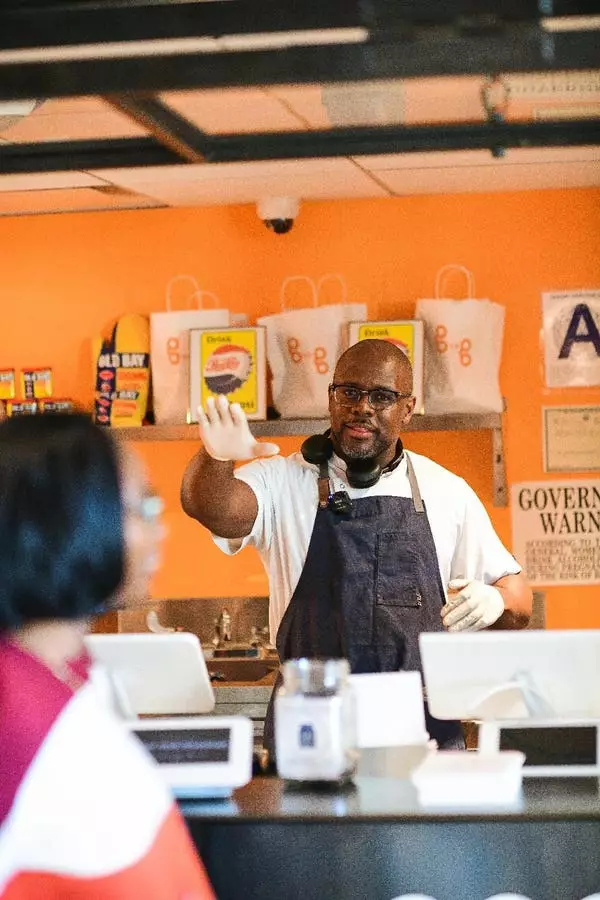Jared Howard, a 45-year-old African-American man, is making waves in the culinary industry with his pop-up restaurant called Honey Bunny. After spending three years developing recipes, Howard partnered with Good to Go, a non-profit venture under the James Beard Foundation (JBF), to bring his dream of owning a restaurant to life. This unique collaboration aims to drive business growth and raise awareness of Black-owned restaurants and chefs. Honey Bunny is currently located at Market 57 Food Hall in Chelsea, New York, and has gained attention for its delicious mid-Atlantic-inspired comfort food.
The partnership between Honey Bunny and Good to Go not only provides the space and some staff support for the pop-up restaurant but also offers media training, brand development, and financial counseling. This support allows Howard to focus on the business side of the food industry, including writing a business plan and refining the customer experience. The JBF’s support has significantly reduced Howard’s start-up costs, enabling him to launch Honey Bunny with just $1,000. In addition to the foundation’s assistance, the restaurant has also fostered partnerships with culinary brands such as McCormick Spice Company and Tabasco Inc, who have donated supplies.
Howard describes the menu at Honey Bunny as “mid-Atlantic-inspired comfort food.” The restaurant’s specialties include Maryland fried chicken, Chesapeake seafood burger (made with a crab shrimp patty), buttermilk Caesar salad, and banana pudding. Despite its limited space and food preparation area, Honey Bunny has managed to streamline its menu to a handful of items. The menu has undergone several revisions based on consumer feedback to ensure that it meets customers’ expectations. One standout item is the fried chicken, which is brined in hot sauce and finished with a dusting of Old Bay seasoning, giving it a unique and memorable flavor.
Being located at Market 57 has significantly boosted Honey Bunny’s brand awareness, doubling and tripling its customer base since its opening. Howard credits the exposure at the food hall for transforming his restaurant from a concept into a thriving business. Through this experience, he has learned valuable lessons about profit and loss statements, supply chain costs, and developing a business model. Armed with this knowledge, Howard is now looking to attract investors to open a brick-and-mortar Honey Bunny after the pop-up residency ends in March 2024.
Howard’s next goal is to secure investors who will help him transition from a pop-up to a permanent retail eatery. He hopes to stay in the Chelsea area where Honey Bunny has established its brand name but is also open to other locations. However, opening a brick-and-mortar restaurant comes with its challenges. It requires a team of professionals, including lawyers, marketing staff, a chef, and a branding manager, to ensure all aspects of the business are managed effectively. Additionally, the cost of opening a small eatery in Manhattan can range from a quarter of a million dollars and upwards, making it essential to secure the necessary funding.
Jared Howard’s journey from IT project manager to aspiring chef and restaurant owner is an inspiration to many. His partnership with the James Beard Foundation and the success of Honey Bunny at Market 57 have proven that with determination and support, dreams can become a reality. As Howard looks towards the future, he remains dedicated to perfecting his craft and attracting investors who will help him take Honey Bunny to the next level. With its delicious menu and unique concept, Honey Bunny is poised to make a lasting impact in the culinary world and serve as a shining example of African-American excellence in the restaurant industry.

